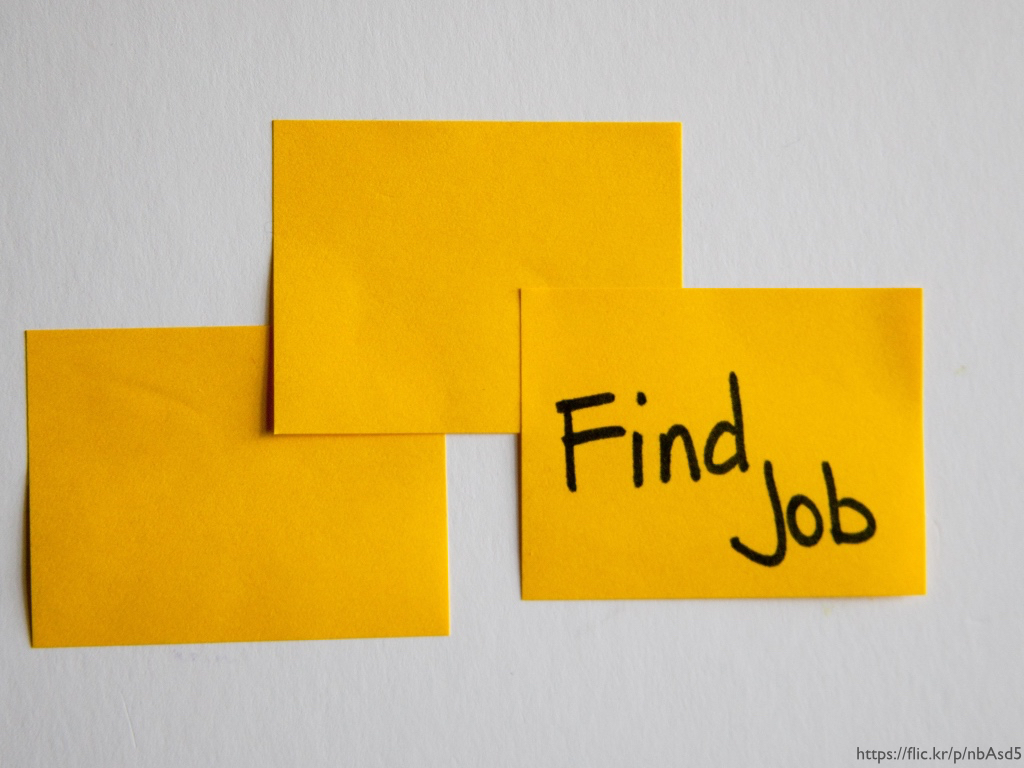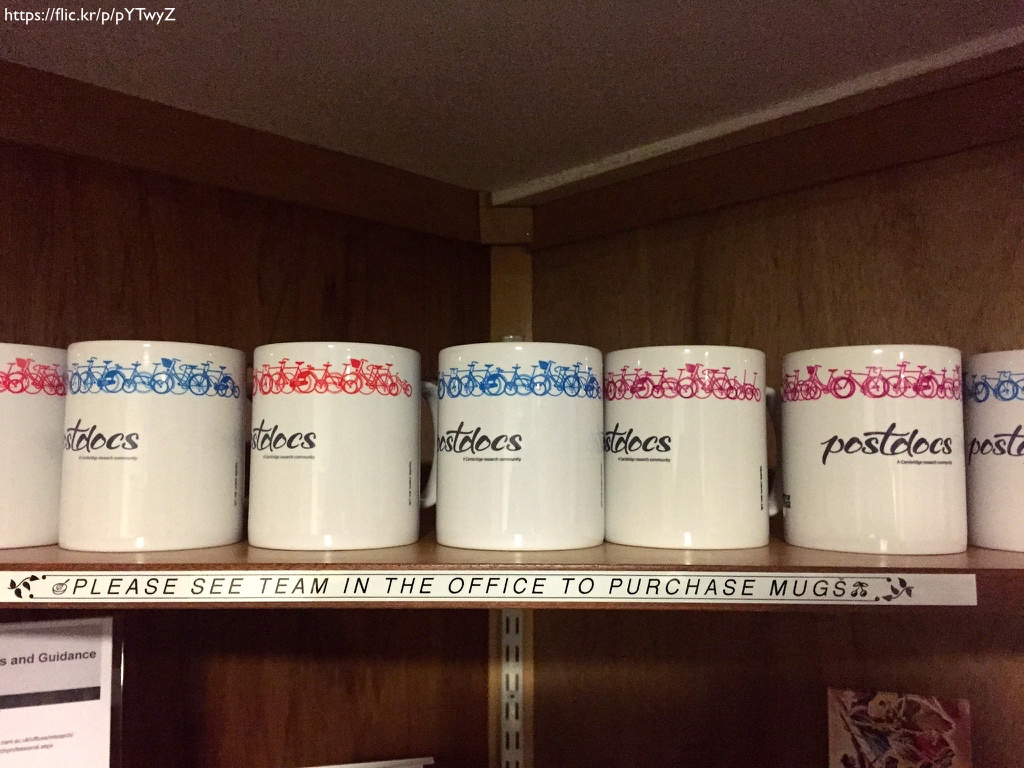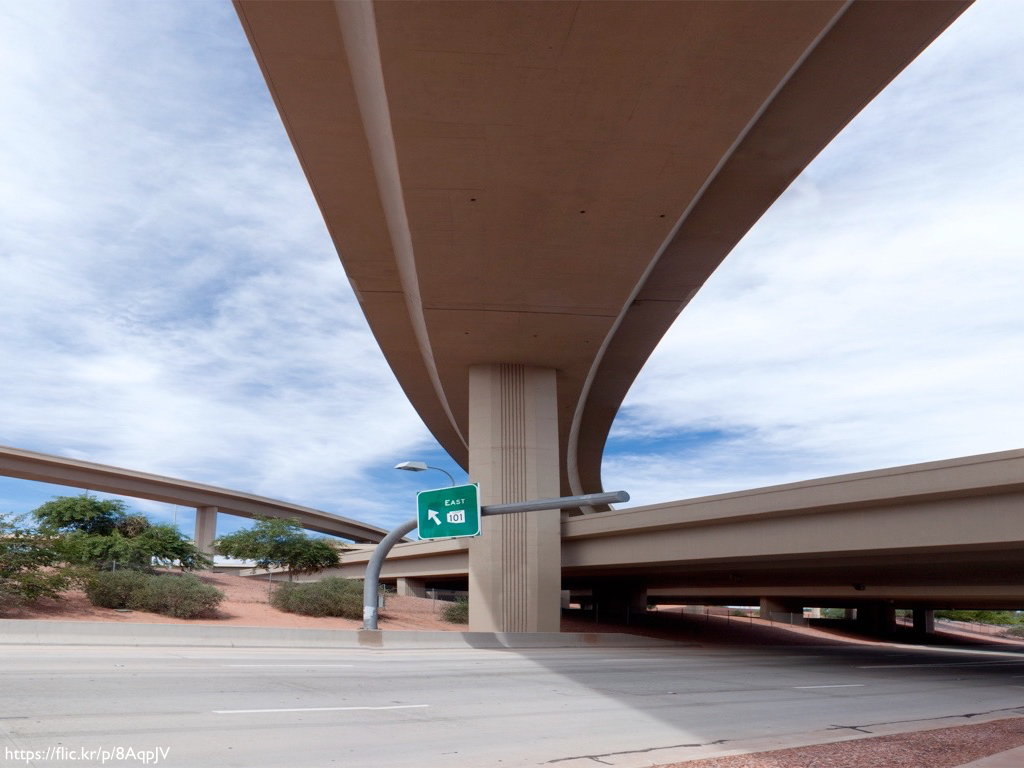
At the end of March this year, I had the wonderful opportunity to visit Purdue University and talk about alternate careers for people pursuing the PhD. Throughout the day I enjoyed a number of interesting discussions with graduate students and faculty. It’s amazing to see how far we’ve come in the last 5 or 6 years in being willing to talk about what faces PhD students upon graduation.
In addition to these less formal discussions, I gave a talk and led a workshop focusing on the nuts and bolts of looking for and applying for different positions. If you’re interested in getting the full “Brian experience,” you can watch videos of the talk and the workshop on YouTube. But since I get fidgety watching a five-minute video let alone an hour talk, I wanted to share the text of the talk here. A portion of the talk drew on the short comments I gave in September 2014 at Penn State’s Symposium on #Alt-Ac. I was glad to get a chance to expand on that line of thinking here. My comments also drew on thoughts that I had had as I worked on a forthcoming article about alt-ac issues and the CLIR postdoctoral fellowship with Meredith Beck Sayre, Marta Brunner, and Emily McGinn. For the title, I of course have to thank the Internet without which none of this would be possible.
And of course, I need to thank my hosts at Purdue: the College of Liberal Arts, the Department of English, and the School of Languages and Cultures, and in particular Nancy Peterson, Madeleine Henry, and Hyunyi Cho, head of English, head of Languages and Cultures, and Associate Dean for Research and Graduate Education, respectively.
Keep Calm and Carry On: Finding and Building PhD Career Paths
Thank so much for the kind introduction and for having me out to speak today.
I’m so pleased that y’all have an administration that is so forward thinking to be having these conversations with you. This is the issue that is facing us at the beginning of the 21st-century graduate education.
If this is the future, the future is now.
As you’ve probably seen, the title of my remarks today is “Keep Calm and Carry On: Finding and Building PhD Career Paths.”
We’ve all seen this poster.
We’ve maybe bought a coffee mug, t-shirt, or bumper sticker with it. If you haven’t done that, you almost certainly have thought about a version that you could make.
That’s what I tried to do when starting to think about this talk. I tried all sorts of variations to get at what I thought might be a clever and funny way of talking about graduate school.
It turns out that a lot of people had the same idea that I did.

And they were ready to cover the grad school experience from beginning…

…to middle…
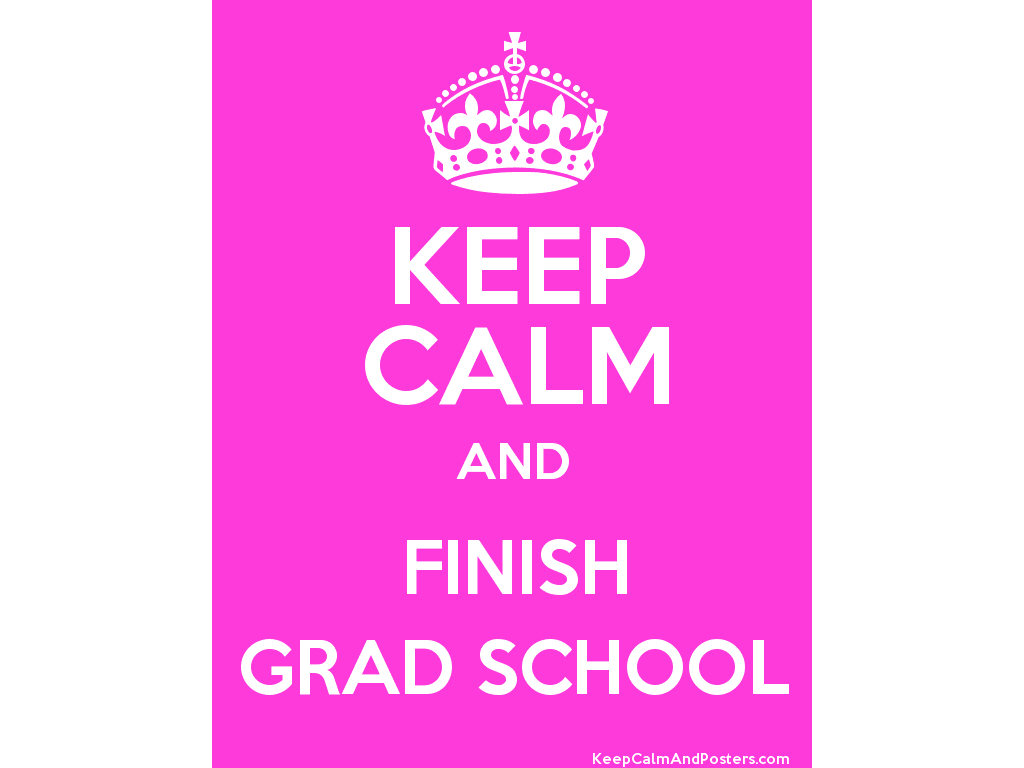
…to the end.
When, I began learning more about the history of this poster, it more and more turned into the one that seemed ideal for what I want to say today. Let’s look at that history for a minute.
The “Keep Calm and Carry On” poster was designed by the British Ministry of Information in 1939. Aware of what was happening in Germany and Austria, the UK thought it likely that they would be going to war in short order, something they had last done 20 years prior.
A big difference between the First World War and the new conflict that was brewing was the radical improvements that had been made in airplanes.
While airplanes were used in the First World War, they were used almost exclusively on the continent. The airplanes simply didn’t have the range to get from the territories controlled by the Central Powers to England and back again.
Combat in the First World War destroyed thousands of British lives, but it did it while the boys were “over there.”
Thanks in part to Charles Lindbergh who completed the first transatlantic flight in 1927, the British government knew that the technology of the airplane had evolved significantly. The British Isles, the Ministry of Information rightly reasoned, would not be so lucky in the coming war. So knowing that it was all but certain that the British populace would face mass air attacks and possibly even poison gas, the government wanted to get out ahead and come up with a means to raise the morale of the people when these events came to pass.
And so…they decided to make a poster. It sounds a bit ridiculous, but I’m not sure it’s all that different from what we do today.
The “Keep Calm and Carry On” poster was designed in the summer of 1939, between 27 June and 6 July. The final version was approved on 4 August, and printing began about 3 weeks later, the same day that Nazi Germany and the USSR signed the Molotov-Ribbentrop non-aggression Pact.
In all, 2.45 million copies of the poster was printed. The government was ready to put them within 24 hours of an attack.
And…then nothing happened. Well, things did happen. There was this little thing called “the Blitz.”
But the Keep Calm poster was held back for “serious air raids.” Two other posters that were designed at the same time were in fact put up.
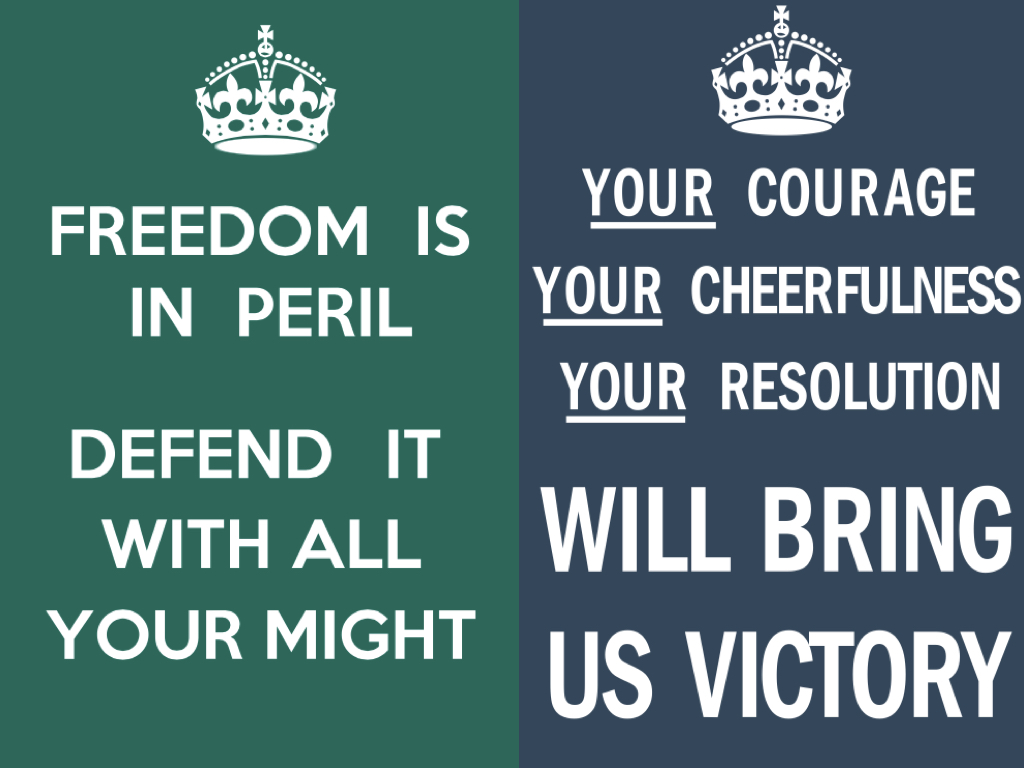
But these posters elicited a generally negative response from the public. As noted in Wikipedia, “Design historian Susannah Walker regards the campaign as ‘a resounding failure’ and reflective of a misjudgement by upper-class civil servants of the mood of the people.”
In April 1940, the vast majority of the posters were pulped. And that was almost the end of that.
In 2000, a used bookseller, Stuart Manley, was sorting through a box of books that he had bought in an auction when he came across a copy of the poster.
He and his wife Mary decided to frame it and hang it by the cash register. When it continued to attract attention, the Manleys decided to begin selling copies. Fast forward a few years, and we’ve got more “keeping calm” than you can shake a biscuit at.
Why is the poster so popular now? There are probably a few different reasons.
- First, it’s pretty good design. It’s simple and easily scanned. It gets its point across in about one second.
- Second, viewed from the current moment of crisis (pick any one that you want), it seems like as a reassuring message from the past. It’s advice that we’d be well served to heed.
- Third, it reads as about the most British thing ever. Stiff upper lip, and all that.
- Fourth, because of all these previous things, it’s ripe for remixing.
Our culture loves a good meme, and this is among the best that we’ve had since Kanye rushed the stage in 2009.
So that’s the history of the poster, in a nutshell. But what does it have to say about PhD career paths?
In addition to its general message, to which I’ll return in a minute, I think the history of this poster provides a remarkable parallel for thinking about people who pursue graduate degrees (esp. in the humanities and social sciences) and then end up looking outside teaching for employment, to those sectors that we call “alt-ac” or “post-ac.”
The first reason for this parallel between the poster and those that finish grad school and don’t end up on the tenure track is that this poster is a failure. (Stick with me here.)
It’s a failure in a couple of senses. First, it was never really used for the purpose for which it was created. Lots of time, effort, and hard work went into these words (only five of them, but multiplied by 2.45 million times which gets them in the neighborhood of a dissertation’s length). But they didn’t end up where they were intended to go.
The second reason the poster is a failure? It’s not just that it isn’t used, but that when looking backwards now, we can see that the poster was a bad idea to begin with. Again, there’s possibly a parallel here for those with PhDs looking for jobs beyond the professoriate.
But. BUT! The parallel continues: if you give this poster some time and you put it into a new context, it’s suddenly wildly successful.
This is something that no one could have predicted. It’s easily one of the most recognizable designs of the last century.
Those of us who are working outside the tenure-track for which we trained are often very much like this poster. If you give us some time, and you put us into a new context that thing that looked like a failure, that thing that felt like a failure—that broke down and bawled in the parking lot of the YMCA…
…after getting a call saying he didn’t get that very last job he was in the running for and now didn’t know how to feed himself or his family—that person can become wildly successful in a way that no one could have predicted. (He might even get an invitation to come and talk to other people about it.)
This success from an apparent failure is the real message of the “Keep Calm and Carry On” poster. Indeed, the fact that the poster has had to live its own message is what keeps the phrase from being as trite as it appears to be at first glance.
So when I say “Keep Calm and Carry On” to those of you who are thinking about jobs outside of the tenure track—jobs in libraries, in administration, in campus life, in development—or even jobs outside of the academy altogether—jobs in government, in nonprofits, in (of all things) businesses—what I’m really saying is the following: you might feel like a failure but you aren’t.
Give yourself time and give yourself a different context, and you will be successful. In fact, you might be a whole lot more successful than those posters that actually got used for their intended purpose. No one, it turns out, remembers those.
In short, here’s what I most want you all to remember: you will get a job.
What that job is, I can’t tell you. But you’ll get one because people that have graduate degrees are eminently employable.
And I can, more or less, tell you whether you’ll get the job that your PhD program has, I imagine, largely been training you for. Based on extensive surveys conducted by the Modern Language Association and the American Historical Association, if you graduate in “English” (which includes “English and American language and literature, creative writing, comparative literature, classics, folklore, speech and rhetorical studies, and, beginning in 2012, rhetoric and composition”) or in history, your chances of being in a tenure-track job anytime within 5 years of graduating are somewhere between 40-55%.
Again, as an aside, it’s worth emphasizing that those who aren’t in tenure-track jobs are highly employable. The AHAs survey of 2500 history PhDs found only two people in their sample who were unemployed. That’s about a 0.1% unemployment rate. The MLA’s data puts unemployment at between 2 and 4%.
So you’re going to get jobs. But, only 40-55% of you graduate students will be getting jobs doing what you are training to do here at Purdue.
This, it turns out, isn’t a statistical anomaly brought about by the 2008 recession. This, according to the data that the MLA, the AHA, and others have analyzed, is the way that it has been for years. Decades. This means that the situation isn’t going to change soon.
But it also means that approximately half of you graduate students here today will be working outside the tenure track. And that’s not failure. That, my friends, is normal.
And so let me say once more, “Keep Calm and Carry On.”
You are in the same boat as so many other people and you aren’t failing. It’s the system of graduate education that has been failing you.
Now please note that I didn’t say that it’s your advisor who is failing you; or your committee; or your DGS; or your department; or the graduate school; or Purdue. It’s an entire system that is made up of so many schools and so many decision makers that it seems impossible to do anything to change what has been across that system.
But we’re here in a very specific context. We’re very specific people. And while we are working within a large system, we make our own choices, and therein lies our opportunity. “Keep Calm.”
What I’d like to do for the rest of this presentation is put out some suggestions of what we can do to find and build PhD career paths.

I’m choosing those verbs carefully, as they point to the two different audiences in this room: graduate students and faculty members. For you graduate students, it’s up to you to find the path to your career. For you faculty members, it’s up to you to build pathways to more careers for the students that are going to be coming here.
In the interest of not losing the attention of either audience, I’m going to try to move back and forth between the two groups. Let me know if you start to get whiplash.
Point #1 for Grad Students
The first thing that I want to say to graduate students is that you need to recognize that knowing how a university works is a really marketable skill.
People who work around universities need to understand the incentives that drive the behavior of faculty, graduate students, and undergraduates. And guess what: if you’ve been paying attention in any way, shape, or form while in grad school you already have that skill set.
You know what matters to the undergraduates, because you were one. You know what matters to the graduate students because, well, because. And you know what matters to the faculty not just because you’re training to become a faculty member but because you are faculty members much of the time.
It’s not an understatement to say that these three groups—undergraduates, graduate students, and faculty—are the people around whom the entire university structure is built.
If you understand what these groups want and need, then you are in a fabulous position to help a university be successful. You are in such a better position to work in campus life or development or in the library because you already know what matters most to the university.
You have, in short, one of the most important things needed for an alt-ac job: an understanding of the industry in which you could be working. You might be a little lacking in the experience for working in a different part of the university, but you’ve got this thing that will be almost impossible to teach someone who hasn’t spent years inside the academy: deep insider knowledge.
What’s more, because there are universities everywhere, you have the opportunity to choose where you live. No longer need you apply to jobs in, to pick a totally not random example, Fairbanks Alaska.
I applied for a job in Fairbanks in 2008 or so. Fairbanks isn’t like Juneau or Anchorage, which are close to Washington State. Fairbanks is in the middle of the state. There’s nothing else for miles and miles.
I went on Google Maps to street-view my way around campus and discovered that there were dirt roads there. The day I mailed the application, in OCTOBER, the temperature there was -30F. As I put the envelope in the mail, I said, “I hope they don’t want to interview me.”
You can now choose where you live. I can’t underscore how unusual this is in academia.
Point #1 for Faculty
The first thing that faculty can do relates to the previous point about graduate students finding employment on campuses. If they are going to do this, there is a very good chance that they will end up in that terrible, terrible institution we like to refer to as “the administration.”
Faculty in this room: can you imagine how hard it might be for an advisee to take a job in some campus office when they’ve heard nothing but complaints about admin for years?
I’m not saying that university administration is always right. But administration and staff jobs aren’t beneath your students. They’re not beneath you.
The broader point here is that when students begin to contemplate jobs that fall outside the tenure track they understandably start to worry that they will no longer have the approval of their advisers. This isn’t some Freudian relationship; it really matters. After all, if your adviser thinks you aren’t serious, she or he might not recommend you for that fellowship that you really need in order to finish your degree.
It’s critical that faculty members not diminish the outcomes of 50% of the graduates from your programs. It’s important that graduate students feel that they are successful no matter what their ultimate career path.
We have got to stop socializing our students to think that anything less than being a clone of our ideas or our employment is the only option.
Let’s be willing to call one another out when we hear ourselves making light of any career path that isn’t the tenure track. Doing will lay the groundwork for our students to explore a wide variety of career options without any additional baggage.
Point #2 for Graduate Students
Okay, graduate students: back to you. If universities want you to know about the things that matter to them, they also want something else: a little bit of experience.
It’s so much easier to imagine someone working in the Admissions Office if they’ve ever worked in that office before. Or even someone who had worked in any office environment.
Of course, once you’re out of grad school, you don’t need a “little experience,” you need a “little bit of job.”
So here’s how to retrain for the future if you’re in grad school at the moment: get a part-time job. Get one in an office on campus that does nothing like what you are doing in graduate school.
Don’t, in other words, be like me. I got a job in graduate school working as an editorial research assistant for The Letters of Samuel Beckett.
My job was to hunt down the materials needed to write the footnotes about whatever Sam mentioned in his letters. If he said “earthquake,” I had to figure out which one. In short, while I was in graduate school, learning how to research, I had a job where I…learned how to research.
And guess what: when I graduated, I knew how to research. Far better off, in some ways, were my friends who had worked in a computer lab on campus or in the Center for Faculty Development and Excellence.
In short, take time right now to do something more than just your graduate work.
Find 5-10 hours per week. It doesn’t have to be here on campus. You can volunteer at a local non-profit or start one of your own. Just find something that will give you experiences that you can draw on down the line.
And yes, I know that you don’t really have time for a part-time job at the moment.
I totally remember feeling that way. So when I tell you to get a job, Keep Calm. The truth of the matter is that it’s so much easier to get that experience now than it will be once you’ve graduated. And sadly, after graduate you’ll have even less time.
The main thing here is that you should do something else than just grad school. The more varied experiences you have, the better prepared you will be for whatever happens next. People aren’t afraid to hire PhDs, but it makes them more comfortable if you can show experience doing other things.
Point #2 for Faculty
All right, back to faculty. If our students need to have different experiences to find their career paths, how can we build this into our programs? How can we encourage our students to “do something else”?
Let me illustrate again from an experience of my own. I was fortunate to receive a fellowship for graduate school that not only paid my tuition but also provided me a stipend. Shortly after accepting admission, I got a letter giving me additional details about my fellowship and stipend.
One of the conditions of my new position was that I wasn’t supposed to have an outside job. Graduate school was my job and they were paying me for that, so no moonlighting, please.
But since they knew and I knew that I couldn’t live in Atlanta on $12,500/year, there was an acknowledgment that I might need to take a job and that if I did so I had better keep it to 10 hours/week or less. Oh, and I would need to get permission from my DGS and the Dean of the Graduate School.
Let’s leave aside the infantilization and imagine that when I was admitted to grad school that I got a different sort of letter. It might read something like this,

“Welcome to graduate school. Your stipend is $12,500. Your first year on campus, you will work in the Office of Greek Life. Your second-year assignment will be made in consultation with your DGS.”
What I’m proposing is that schools start asking grad students to do more.
If something like this sounds difficult, then it’s worth looking at what already exists here at Penn State, the Graduate Internship Program (or GRIP).
Graduate students in the program work 20 hours per week at their internship and are released from their teaching and research responsibilities. The internship pays the student’s stipend, buying out their teaching time, essentially. The student does something else, they get paid, and a campus office gets some extra hands for a project. It’s a win for all.
It’s important that our students learn to research and that they learn to teach. But if 50% of our students go on to do something besides these things, maybe some portion of their graduate education could be spent doing something else. Maybe it’s just 10%.
Maybe it’s a single semester. But we’ve got to make room in our curriculum for students to do different things because we know that there will be multiple outcomes for the students.
This is a much harder thing to implement than my previous point. This isn’t about changing your personal interactions, about not disparaging others’ choices; it’s part of that larger system. But I think there’s a real opportunity here.
Someone, some school is going to get this right. And it’s not going to be Harvard, Yale, Princeton, or Penn. Those schools don’t have to do anything different for their graduate students because people will just keep coming and they’ve got money enough to do whatever they want. I think it will be state-funded (*cough*) institutions like Penn State and Purdue that will figure this out. You can show schools like mine how we should be doing this.
And it sounds for all the world like a granting opportunity to me.
I’d recommend looking to the Mellon Foundation for money for this project.
Point #3 for Graduate Students
Okay, grad students. Here’s my last point for you, and it’s related to the two that came before. A great way to build experience and do something else that will help you see your education in a new context is to find an opportunity that bridges your experience in the university with that of the “real” world. I can think of no better models for this than two post-doc programs: the CLIR post-doctoral fellows and the ACLS Public Fellows.
The CLIR post-doc takes recently graduated PhDs and puts them in academic libraries around the country.
In these libraries they work in teams on various projects, ranging from cataloguing collections to helping to run digital humanities centers to working on open-access policies for a whole campus. This isn’t the same thing as getting an MLS nor does it turn you into a full-fledged librarian. (I did this post-doc and I never once worked the reference desk, although I could have if I was interested in that opportunity.) CLIR and many libraries see this as a great way of transforming the culture of libraries.
The ACLS Public Fellows program is similar except that instead of libraries, the fellows work for two years in partnering governmental or non-profit organizations. Current fellows work at places ranging the San Francisco Arts Commission, the US Dept of Health and Human Services, the National Constitution Center, and the United Negro College Fund.
The CLIR program’s deadline is always in December, and the ACLS Public Fellows is always in March.
These are two very good programs, but they are of course limited in the number of people they can serve. That said, there are increasingly more and more post-doc opportunities like this that happen at individual campuses. Looking for these sorts of positions can help you explore other career options.
What’s best is that a post-doc like this doesn’t mean that the tenure track is off limits. Lots of people I know have returned to tenure-track jobs after one of these positions. But instead they provide a pivot point, where you pick up a new range of skills and experiences, and you simply broaden the options that you have before you.
Point #3 for Faculty
I’m afraid that my final point for the faculty doesn’t dovetail as nicely with the foregoing as I would like. That’s just me being honest.
What I recommend you faculty members do is to be equally honest with your students. Every year, there should be a clear accounting of what your department’s recent graduates have been doing. And then it should be disseminated to your current students. Don’t bury placement data on your website.
And don’t, for goodness sake, only report on those who have secured TT positions or teaching positions.
Imagine what it would do for your current students if every single one of them had to sit down with the DGS in your department once a year, and the DGS went over how many first-round were secured by students in the department; how many campus interviews; how many offers; and where graduates of the last five years are currently working (because it’s important to know where second and third placements are).
It makes it so much easier for graduate students to Keep Calm and Carry On, knowing that they are not failures, when it is made abundantly plain that 50% of our PhD graduates won’t be on the tenure track.
Simply making the statistics plain for our students will help them be so much better prepared for the reality of the job market. And while we’re being honest with our current students about the past ones, we could take the opportunity to connect our alumni with current students. We don’t have to bring them to campus, but you could organize a speaker series and Skype someone in once a month who is working at something besides a teaching position.
Help your students see not only that your graduates are out there in the world but that you haven’t forgotten them once they didn’t get that R1 teaching job.
You’ll notice, I hope, that this last point isn’t asking for any great changes in your department. It’s not asking you to revamp the number of courses students are required to do or change the PhD examinations. It’s not asking you to change the tenure-track job-market workshops that your department is already holding for students about to graduate. Instead, you are simply being honest with your students and helping them know that there really are multiple outcomes for the PhD.
And not just any PhD, but your PhD. The Purdue PhD is something that leads people to be successful, whether it’s in the expected and planned-for outcome or something like the Keep Calm poster which is wildly successful in a way that no one could have predicted.

So there you have it. The three points for our two audiences.
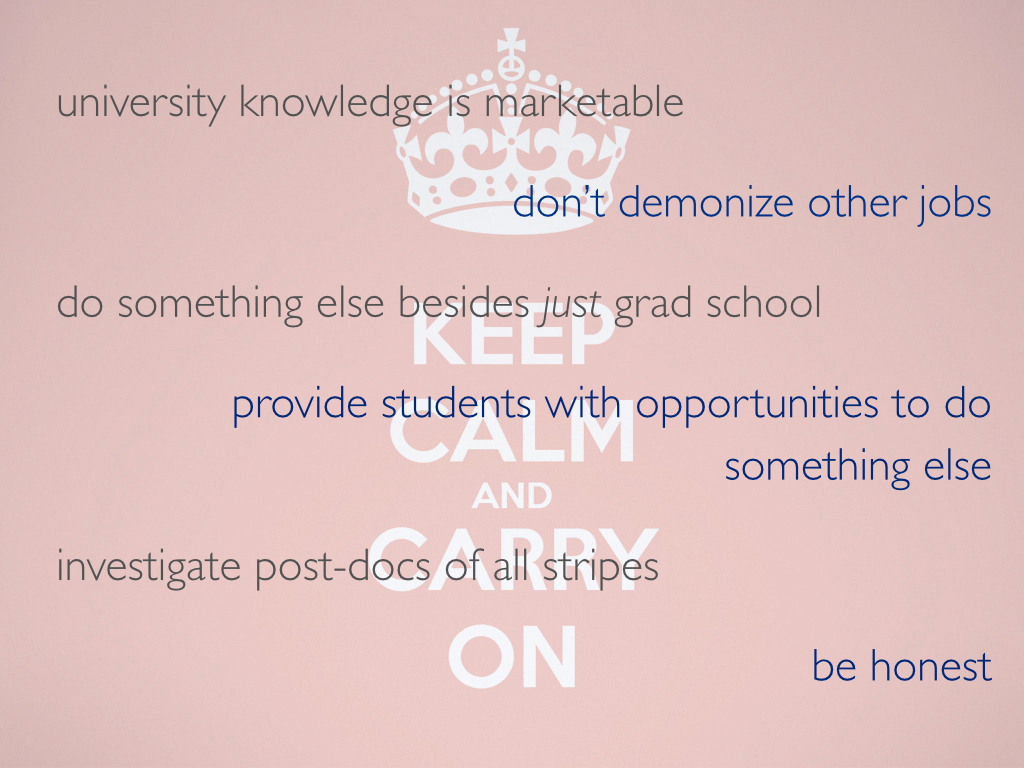
- Grads: university knowledge is marketable
- Faculty: don’t demonize other jobs
- Grads: do something else besides just grad school
- Faculty: provide students with opportunities to do something else
- Grads: investigate post-docs of all stripes
- Faculty: be honest
Because if this failure can, then you certainly can. Keep Calm and Carry On.
Thanks.



































